

Caphernaum
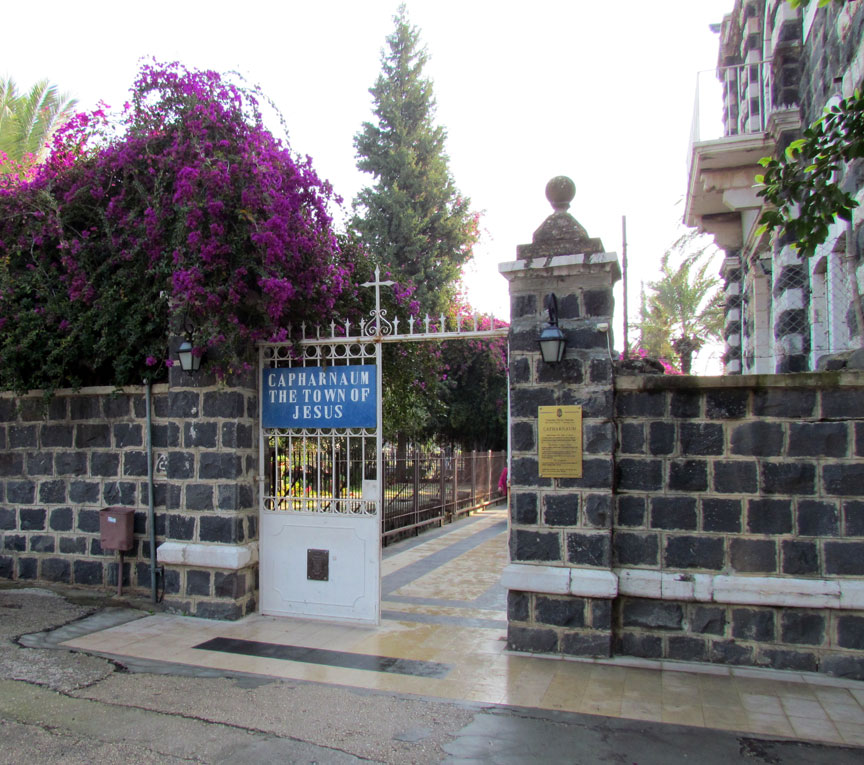
Capernaum was a fishing village inhabited from mid 2nd century BC to 11th
century AD. It is located on the northwestern shore of the Sea of Galilee and
had a population of about 1,500.
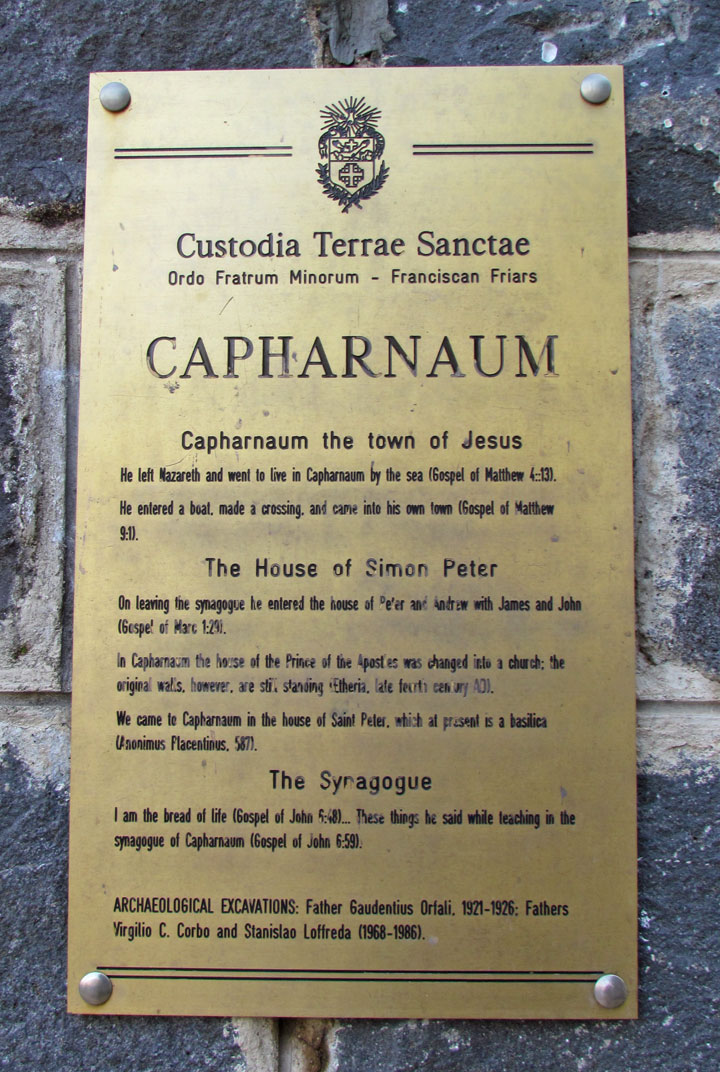
Recent excavations revealed that there were two synagogues in the village: the
more recent was made of limestone and was built on top of the older, which was
made of local black basalt. Only the foundation walls, some , and the
cobblestone floor remain of the earlier structure.
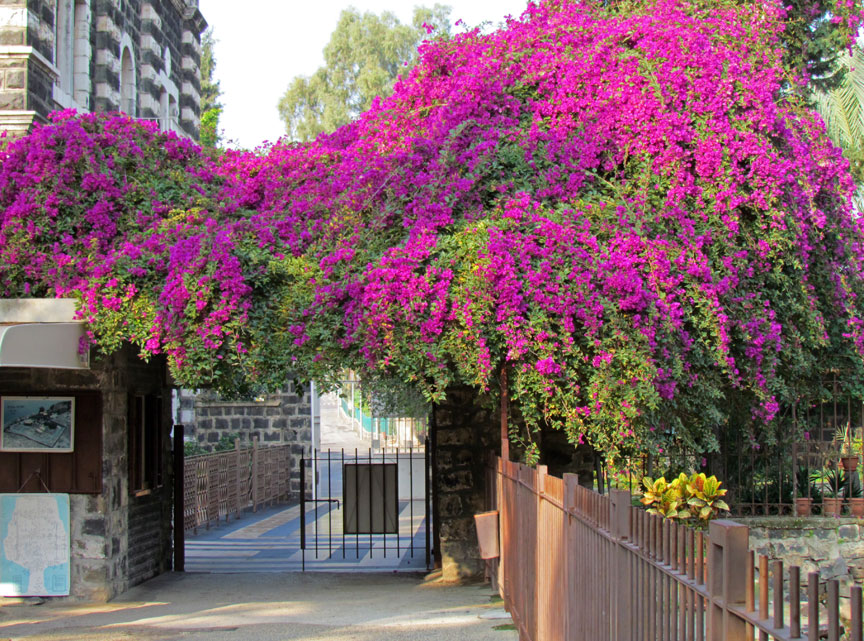
A church near Capernaum is said to be the home of Saint Peter. When Jesus left
Nazareth, he settled in Capernaum where he chose his first four disciples,
James, John, Peter and Andrew.
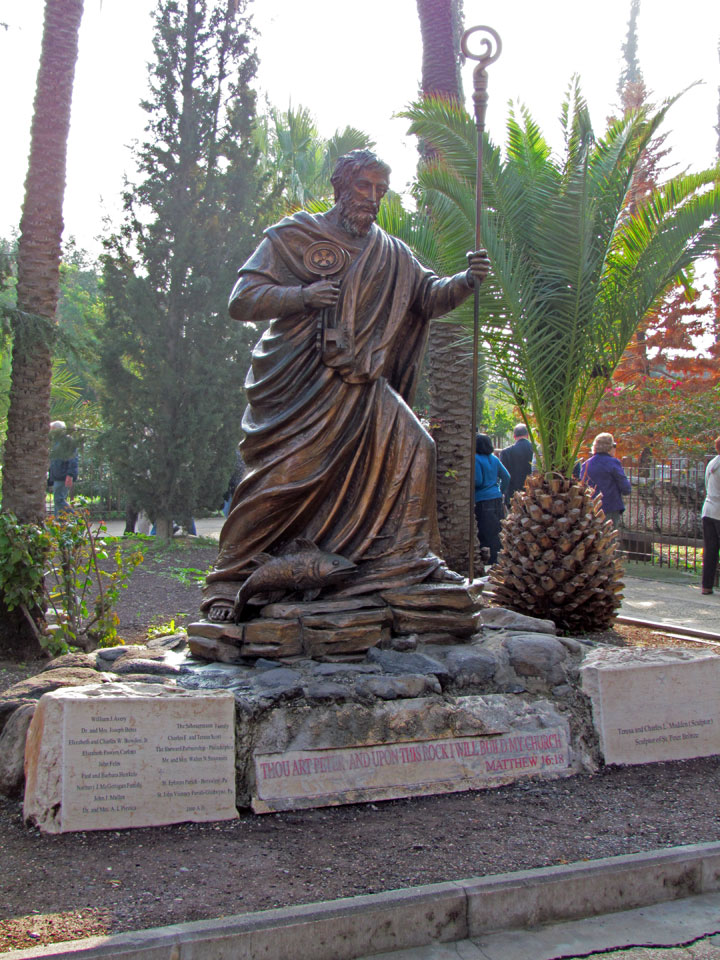
St Peter
The town is cited in the Gospel of Luke where it was reported to have been the home of the apostles Peter, Andrew, James and John, as well as the tax collector Matthew. In Matthew 4:13 the town was reported to have been the home of Jesus. According to Luke 4:31-44, Jesus taught in the synagogue in Capernaum on Sabbath. Jesus then healed a man who had the spirit of an unclean devil and healed a fever in Simon Peter's mother-in-law. According to Luke 7:1-10, it is also the place where a Roman Centurion asked Jesus to heal his servant. A building which may have been a synagogue of that period has been found beneath the remains of a later synagogue.
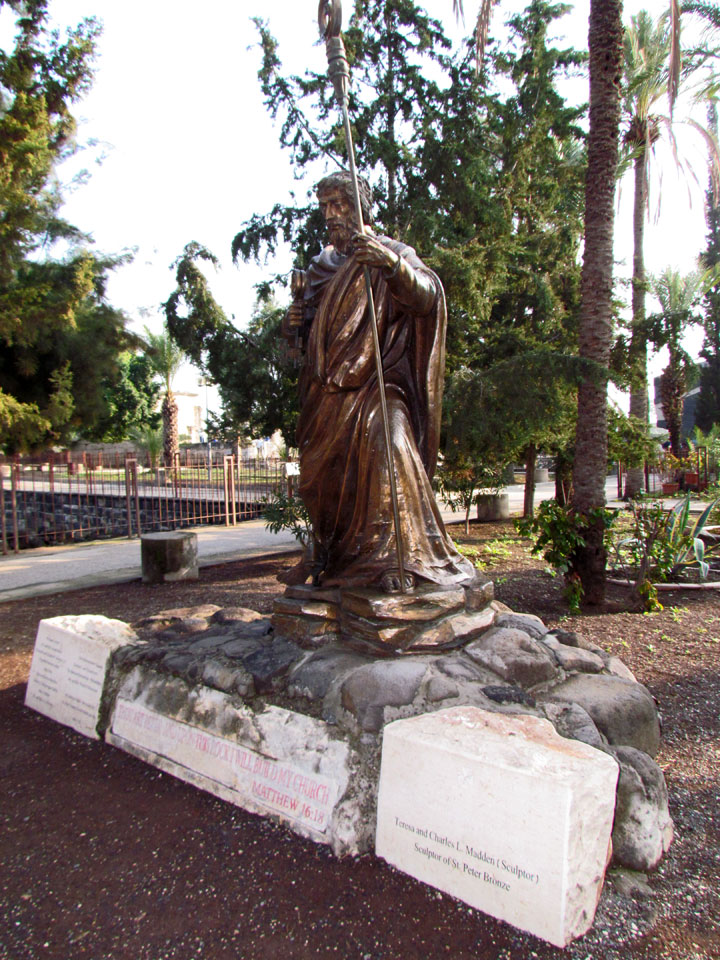
Capernaum is also mentioned in the Gospel of Mark (2:1), it is the location of
the famous healing of the paralytic lowered through the roof to reach Jesus.
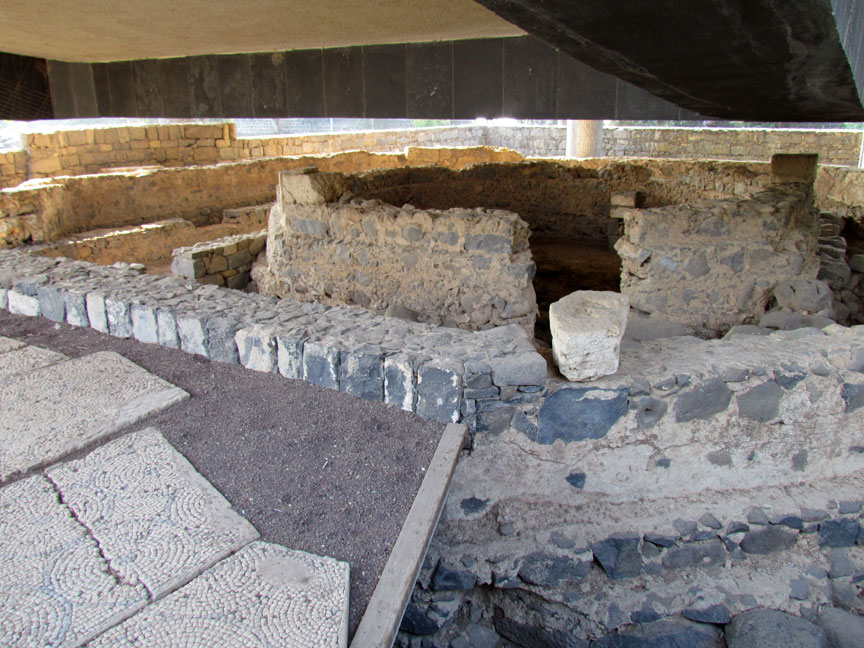
Peter's house
Josephus referred to Capernaum as a fertile spring. He stayed the night there
after spraining his ankle. During the first Jewish revolt of 66-70 Capernaum was
spared as it was never occupied by the Romans.
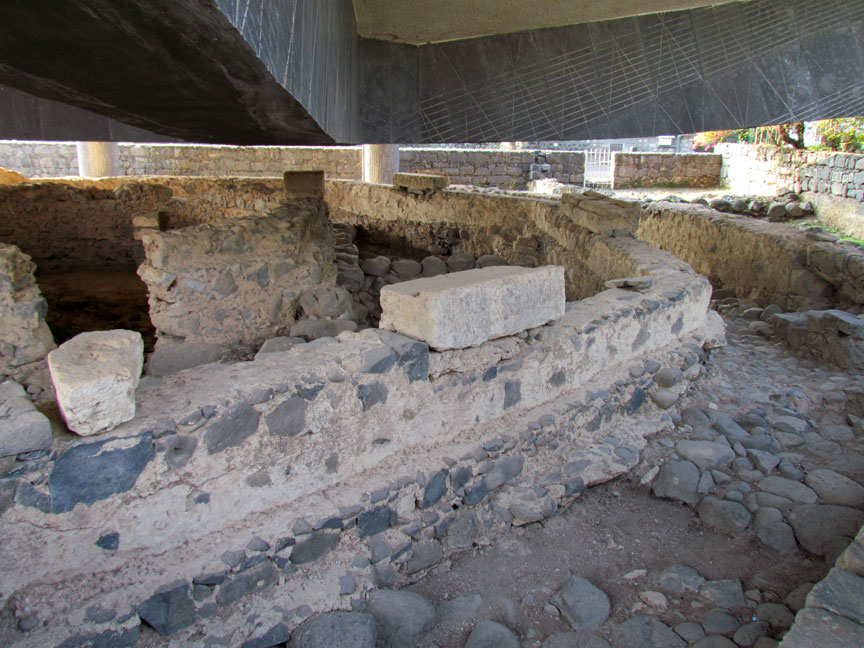
Although Kfar Nahum, the original name of the small town, means "Nahum's
village" in Hebrew, apparently there is no connection with the prophet named
Nahum. In the writings of Josephus, the name is rendered in Greek as "Kαφαρναουμ
(Kapharnaum)". In Arabic, it is called Talhum, and it is assumed that this
refers to the ruin (Tell) of Hum (perhaps an abbreviated form of Nahum) (Tzaferis,
1989).
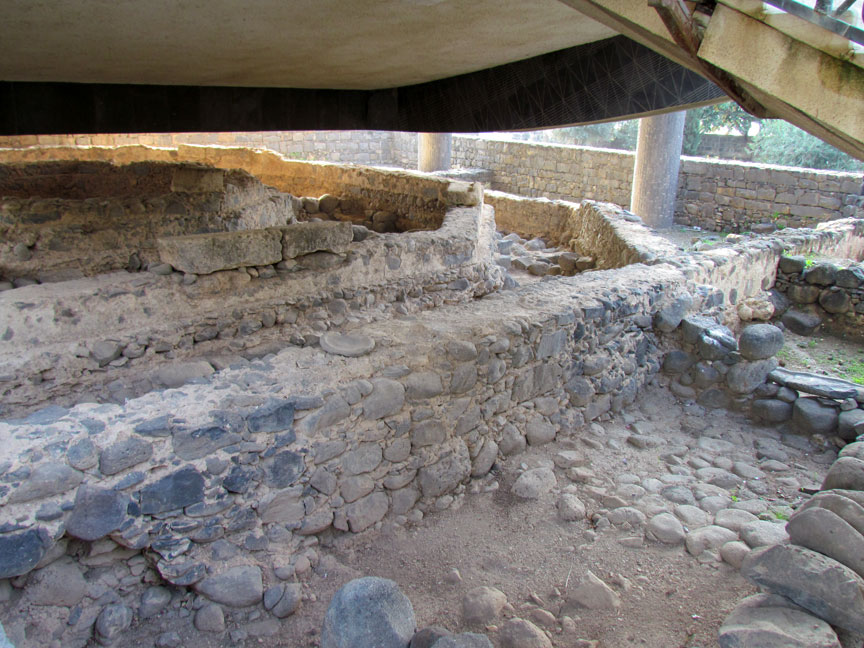
Drawing upon literary sources and the results of the excavations, it has been
possible to reconstruct a part of the town's history. Archaeological evidence
demonstrates that the town was established in the 2nd century BC during the
Hasmonean period. The site had no defensive wall and extended along the shore of
the nearby lake (from east to west).
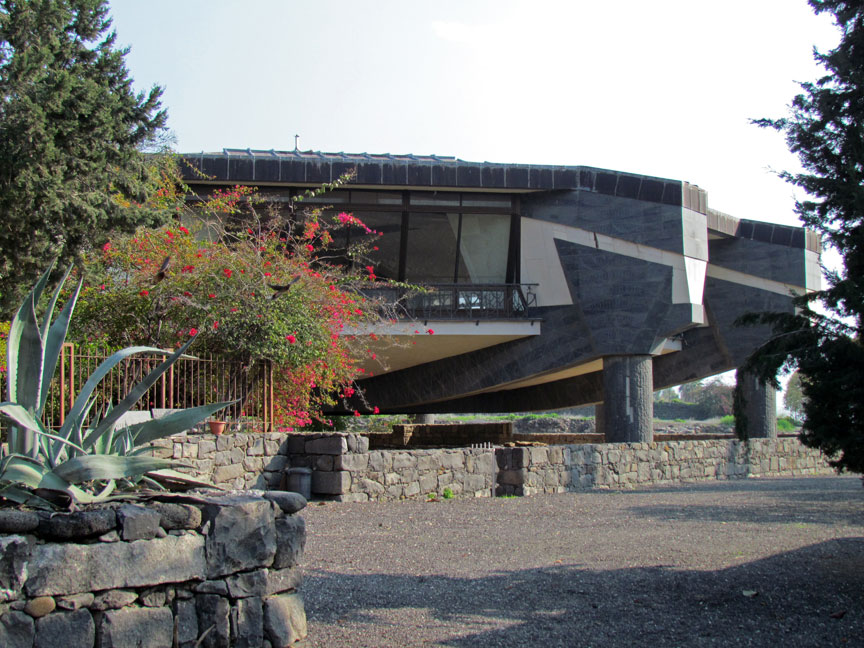
church over Peter's house
The cemetery zone is found 200 meters north of the synagogue, which places it beyond the inhabited area of the town. It extended 3 kilometers to Tabgha, an area which appears to have been used for agricultural purposes, judging by the many oil and grain mills which were discovered in the excavation. Fishing was also a source of income; the remains of another harbor were found to the west of that built by the Franciscans.
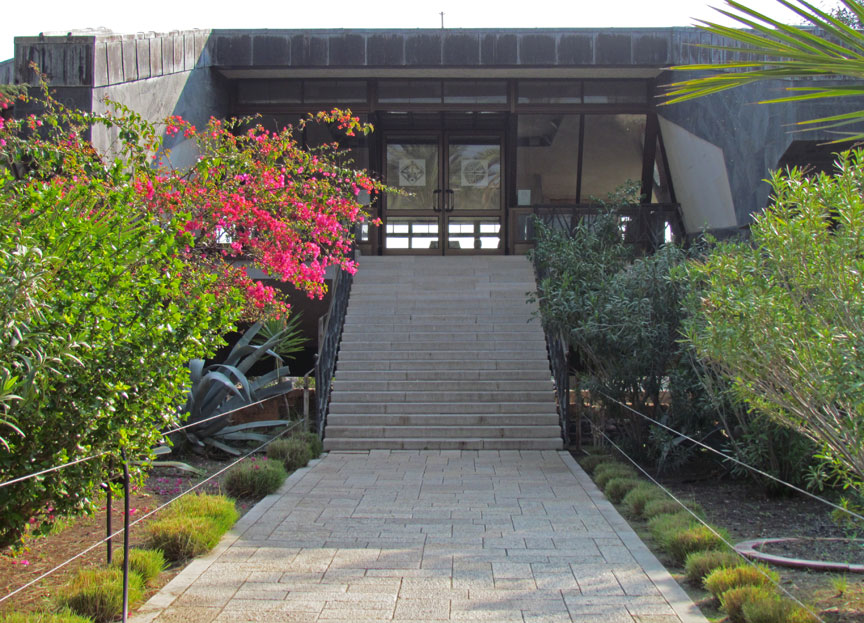
According to the Synoptic Gospels, Jesus selected this town as the center of his
public ministry in the Galilee after he left the small mountainous hamlet of
Nazareth (Matthew 4:12-17). Capernaum has no obvious advantages over any other
city in the area, so he probably chose it because it was the home of his first
disciples, Simon (Peter) and Andrew. The Gospel of John suggests that Jesus'
ministry was centered in a village called Cana.

No sources have been found for the belief that Capernaum was involved in the
bloody Jewish revolts against the Romans, the First Jewish-Roman War (AD 66–73)
or Bar Kokhba's revolt (132–135), although there is reason to believe that
Josephus, one of the Jewish generals during the earlier revolt, was taken to
Capernaum (which he called "Kapharnakos") after a fall from his horse in nearby
Bethsaida (Josephus, Vita, 72).
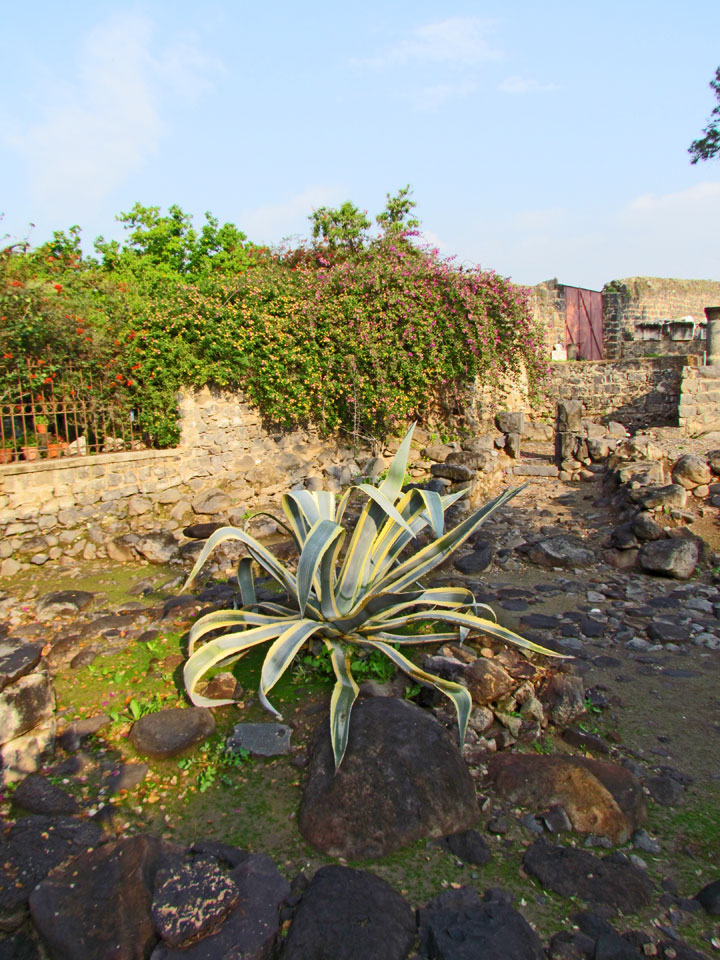
In 1838, the American explorer, Edward Robinson discovered the ruins of the
ancient Capernaum.
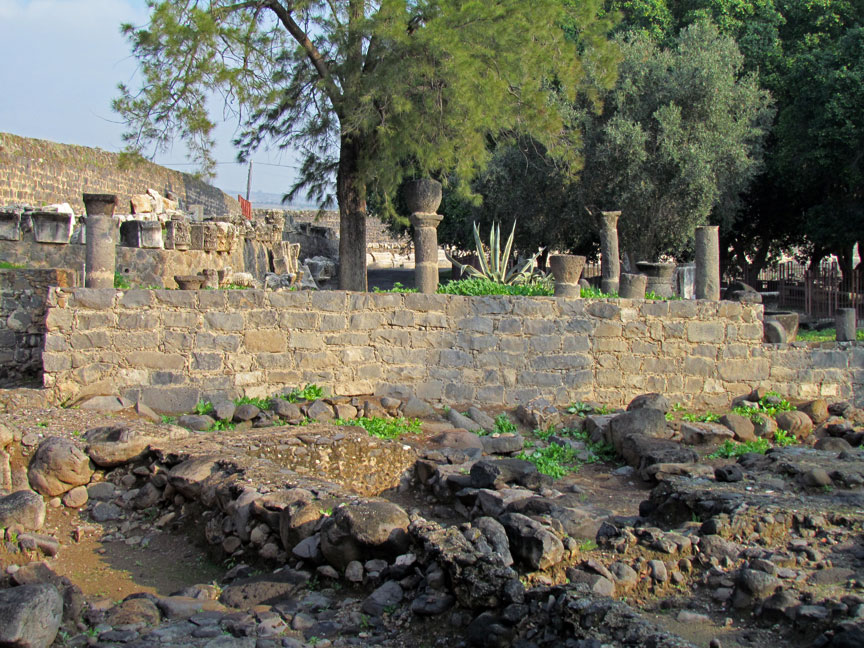
In 1866, British Captain Charles William Wilson identified the remains of the
synagogue, and in 1894, Franciscan Friar Giuseppe Baldi of Naples, the Custodian
of the Holy Land, was able to recover a good part of the ruins from the
Bedouins.
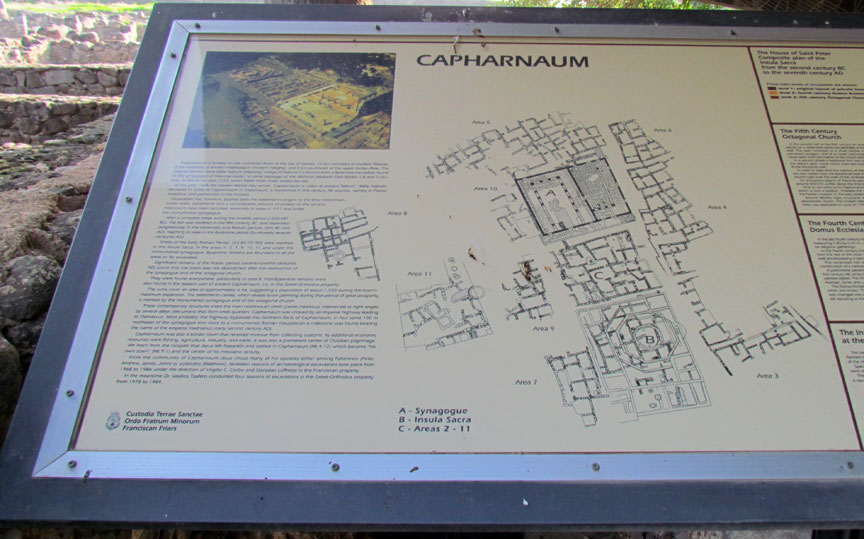
The Franciscans raised a fence to protect the ruins from frequent vandalism, and
planted palms and eucalyptus trees brought from Australia to create a small
oasis for pilgrims. They also built a small harbor. These considerable labors
were directed by the Franciscan Virgilio Corbo.
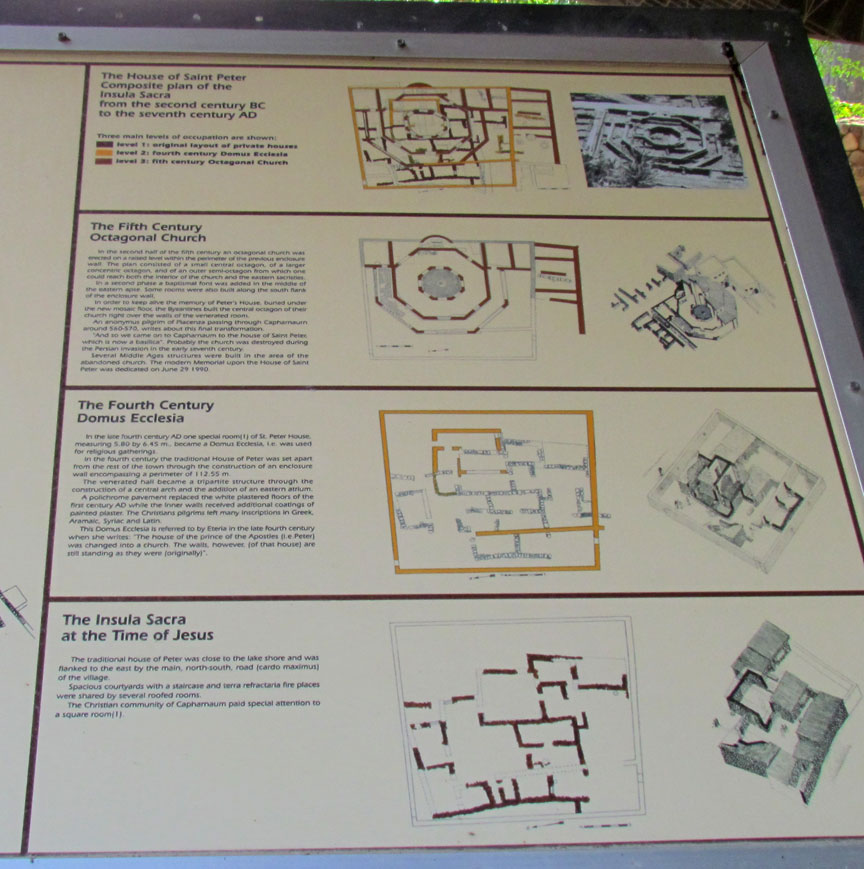
The most important excavations began in 1905 under the direction of the Germans
Heinrich Kohl and Carl Watzinger. They were continued by the Franciscans Fathers
Vendelin von Benden (1905–1915) and Gaudenzio Orfali (1921–1926). The
excavations resulted in the discovery of two public buildings, the synagogue
(which was partially restored by Fr Orfali), and an octagonal church. Later, in
1968, excavation of the western portion of the site—the portion owned by the
Franciscans—was restarted by Corbo and Stanislao Loffreda, with the financial
assistance of the Italian government. During this phase, the major discovery was
of a house which is claimed to be St. Peter's house, in a neighborhood of the
town from the 1st century AD. These excavations have been ongoing, with some
publication on the Internet as recently as 2003.
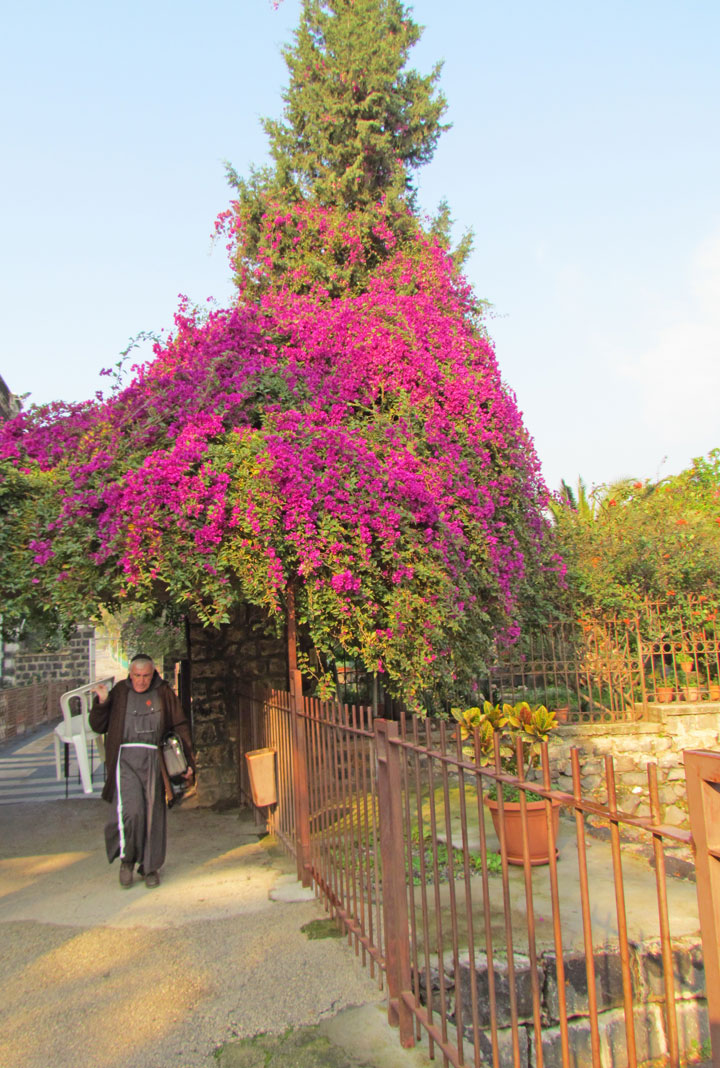
The excavations revealed that the site was established at the beginning of the
Hasmonean Dynasty, roughly in the 2nd century BC, and was abandoned in the 11th
century AD.

The eastern half of the site—the portion owned by an Orthodox monastery—has also
been surveyed and partially excavated under the direction of Vasilios Tzaferis.
This section has uncovered the village from the Byzantine and Arab periods.
Features include a pool apparently used for the processing of fish and a hoard
of gold coins. (Tzaferis, 1989).
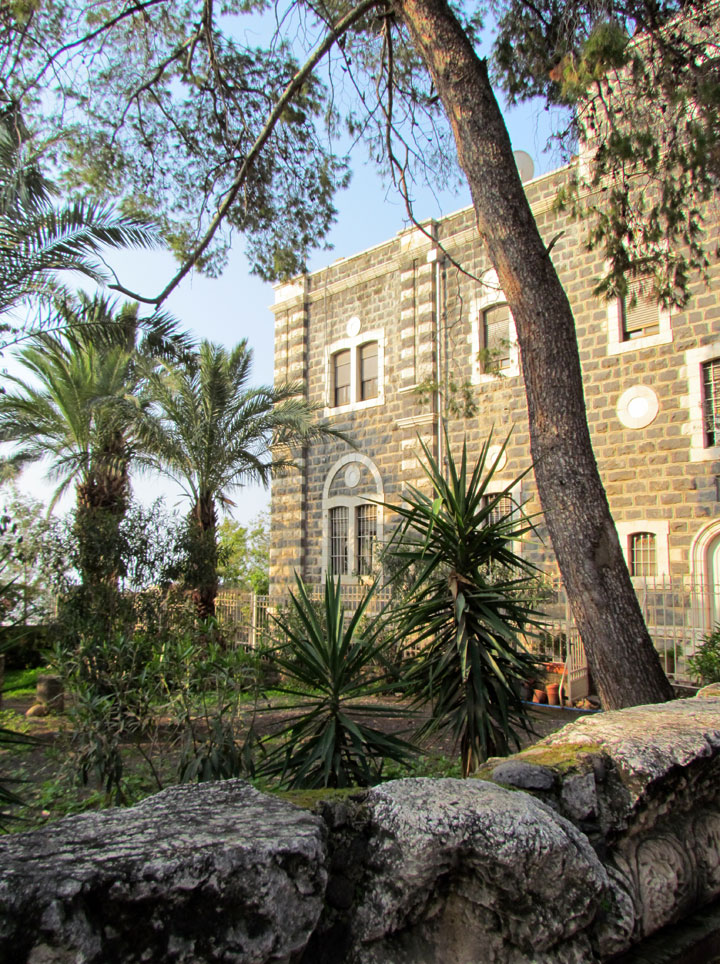
Capernaum is situated on the north shore of the Sea of Galilee near one of the
main highways connecting Galilee with Damascus.
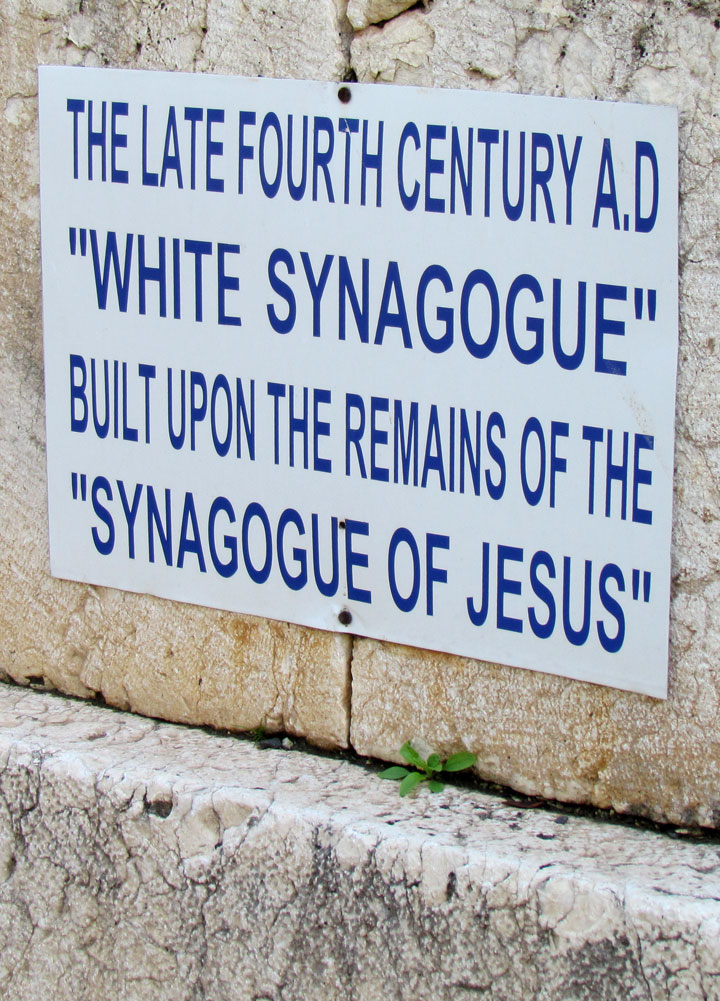
The layout of the town was quite regular. On both sides of an ample north-south
main street arose small districts bordered by small cross-sectional streets and
no-exit side-streets. The walls were constructed with coarse basalt blocks and
reinforced with stone and mud, but the stones (except for the thresholds) were
not dressed and mortar was not used.

The most extensive part of the typical house was the courtyard, where there was
a circular furnace made of refractory earth, as well as grain mills and a set of
stone stairs that led to the roof. The floors of the houses were cobbled. Around
the open courtyard, modest cells were arranged which received light through a
series of openings or low windows (Loffreda, 1984).
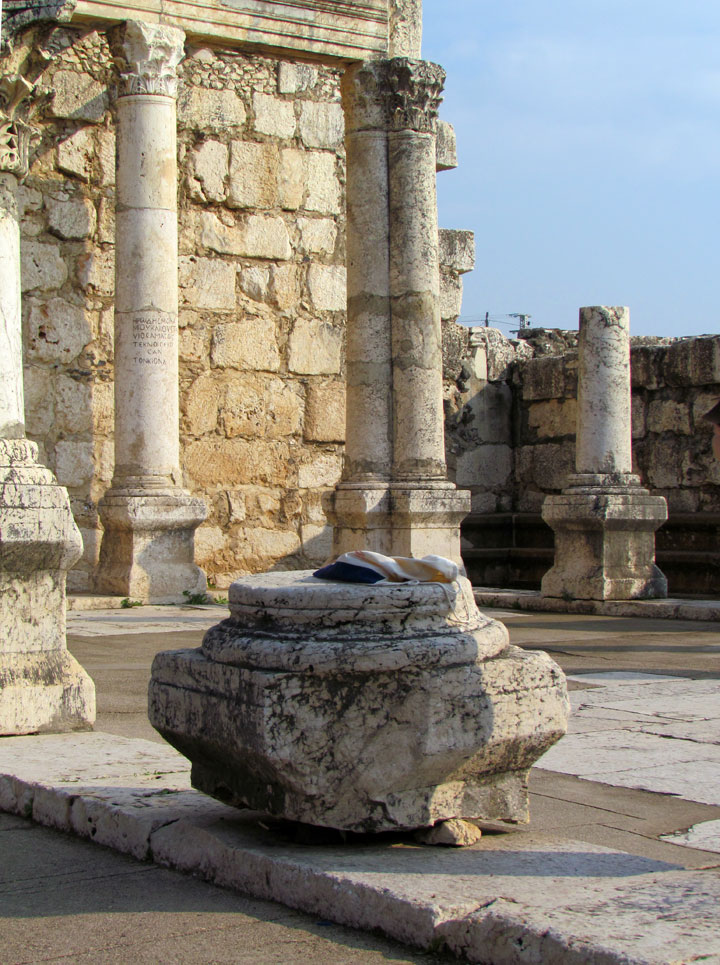
Given the coarse construction of the walls, there was no second story to a
typical home, and the roof would have been constructed of light wooden beams and
thatch mixed with mud. This, along with the discovery of the stairs to the roof,
recalls the biblical story of the Healing of the Paralytic: "And when they could
not come nigh unto him for the press, they uncovered the roof where he was: and
when they had broken it up, let down the bed wherein the sick of the palsy lay."
(Mark 2:4) With the type of construction seen in Capernaum, it would not have
been difficult to raise the ceiling by the courtyard stairs and to remove a part
to allow the bed to be brought down to where Jesus stood.
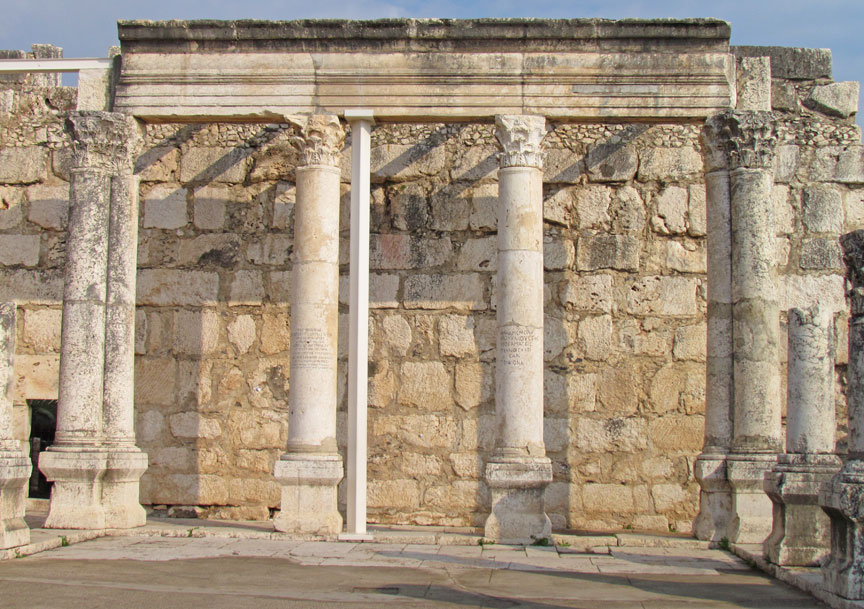
A study of the district located between the synagogue and the octagonal church
showed that several families lived together in the patriarchal style, communally
using the same courtyards and doorless internal passages. The houses were, in
general, quite poor. There were no hygienic facilities nor drainage; the rooms
were narrow and not very comfortable. Most objects found were made of clay:
pots, plates, amphoras and lamps. Fish hooks, weights for fish nets, striker
pins, weaving bobbins, and basalt mills for milling grain and pressing olives
were also found (Loffreda, 1974). The mill was a true heirloom that was passed
on from generation to generation during many centuries.
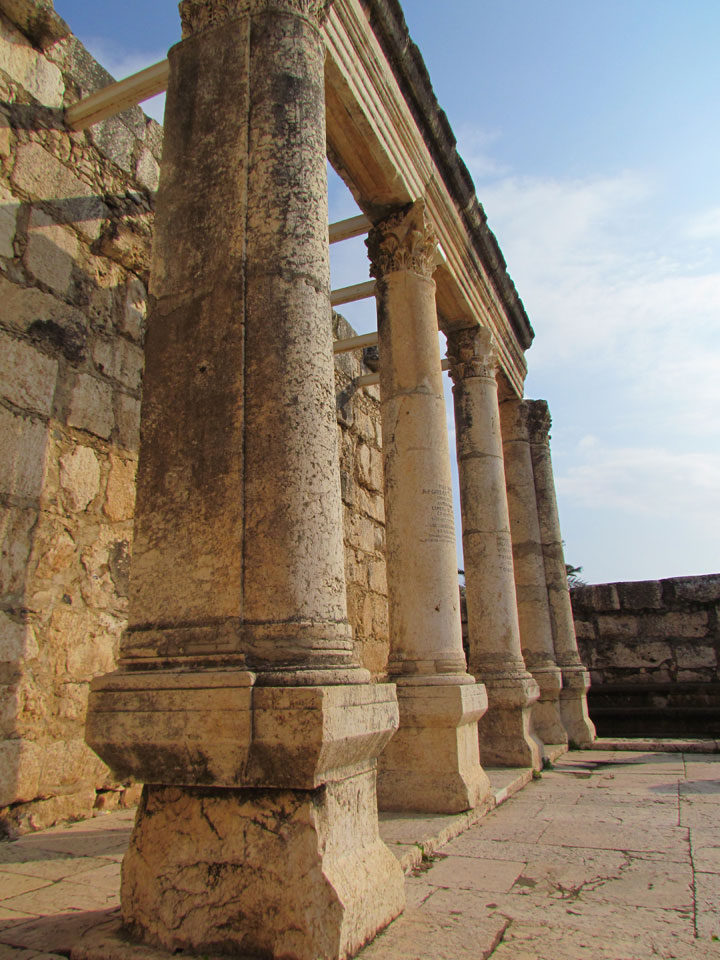
As of the 4th century, there was an improvement in the quality of life: the
houses were constructed with good quality mortar and fine ceramics were also
used. This was about the time that the synagogue now visible was built.
Differences in social class were not noticeable. Buildings constructed at the
founding of the town continued to be in use until the time of the abandonment of
the town.
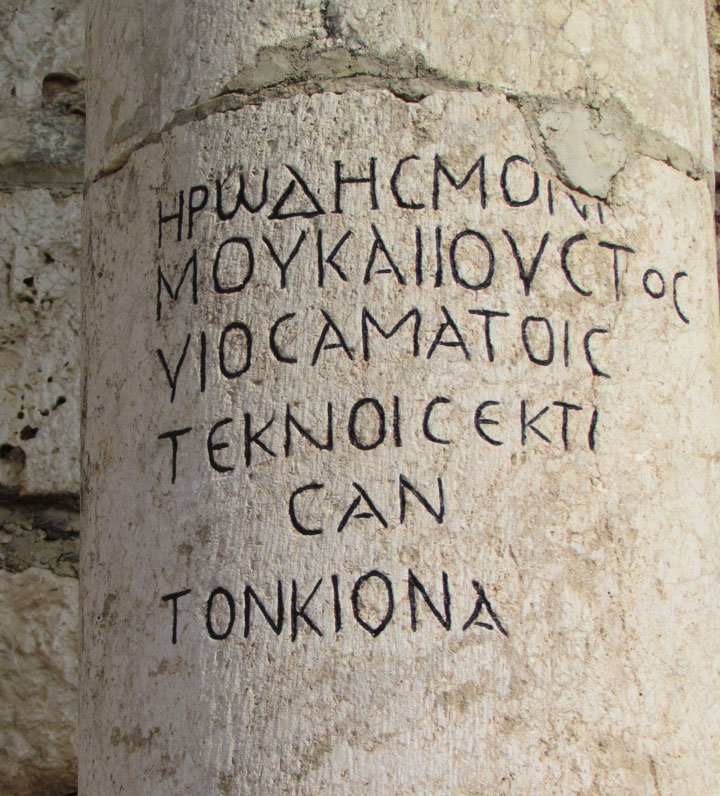
One block of homes, called by the Franciscan excavators the sacra insula or
"holy insula" ("insula" refers to a block of homes around a courtyard) was found
to have a complex history. Located between the synagogue and the lakeshore, it
was found near the front of a labyrinth of houses from many different periods.
Three principal layers have been identified:
1. A group of private houses built around the 1st century BC which remained in
use until the early 4th century AD.
2. The great transformation of one of the homes in the 4th century AD.
3. The octagonal church in the middle of the 5th century AD.
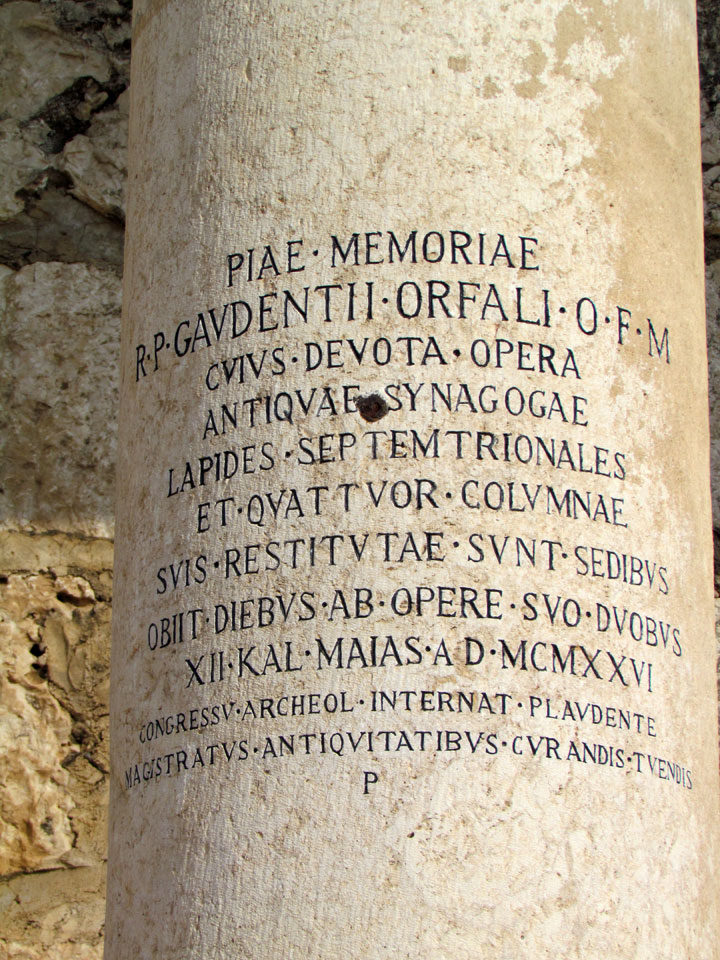
The excavators concluded that one house in the village was venerated as the
house of Peter the fisherman as early as the mid-1st century AD, with two
churches having been constructed over it (Lofreda, 1984).
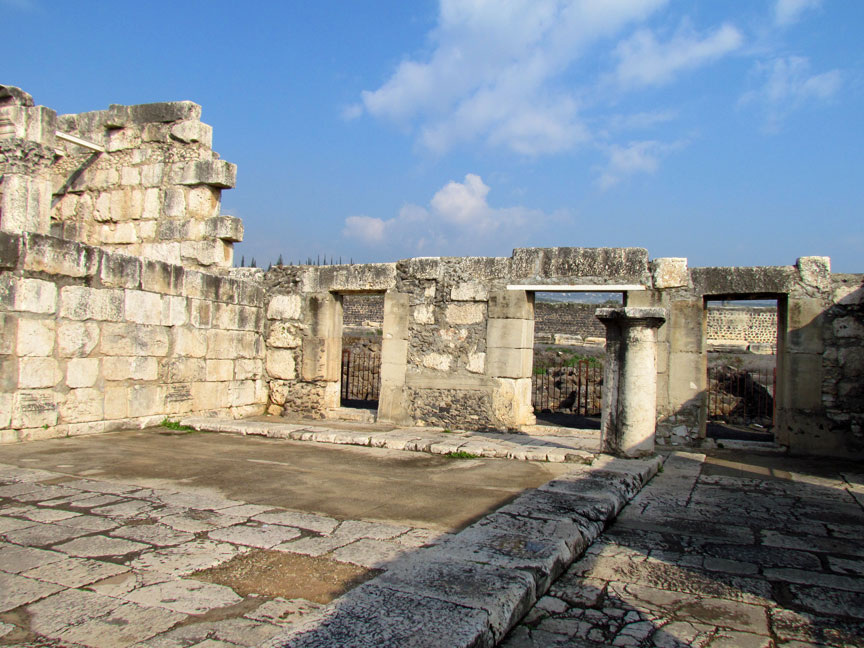
The city's basalt houses are grouped around two large courtyards, one to the
north and the other to the south. One large room in particular, near the east
side and joining both courtyards, was especially large (sides about 7.5 meters
long) and roughly square. An open space on the eastern side contained a brick
oven. A threshold which allowed crossing between the two courtyards remains
well-preserved to this day.
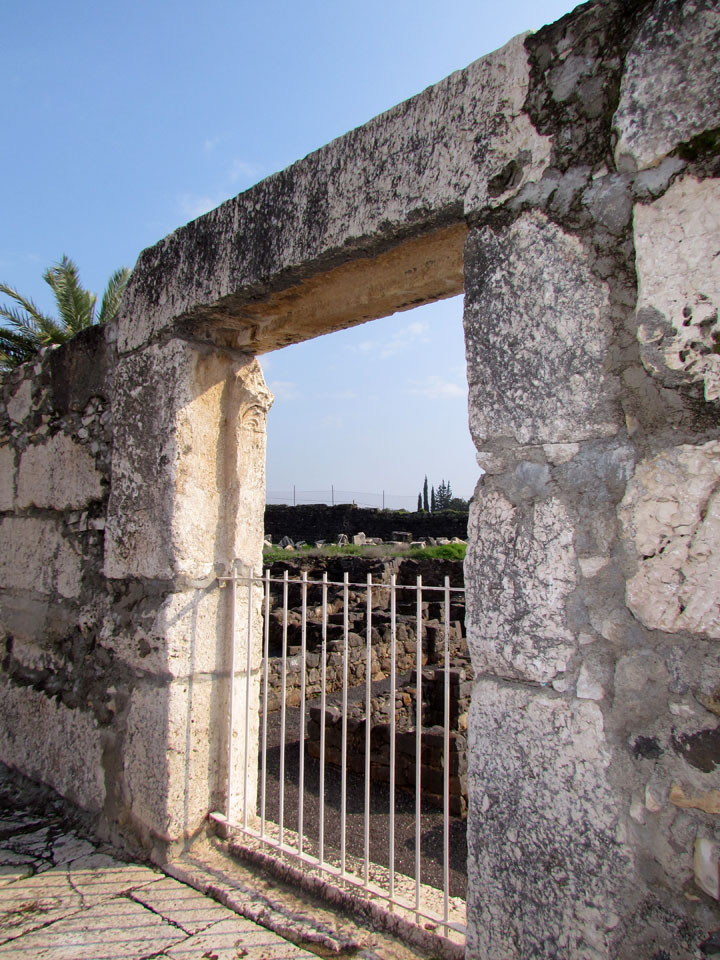
Beginning in the latter half of the 1st century AD, this house displayed
markedly different characteristics than the other excavated houses. The rough
walls were reworked with care and were covered with inscriptions; the floor was
covered with a fine layer of plaster. Furthermore, almost no domestic ceramics
are recovered, but lamps abound. One explanation suggested for this treatment is
that the room was venerated as a religious gathering place, a domus-ecclesia or
house church, for the Christian community. (Loffreda, 1984)
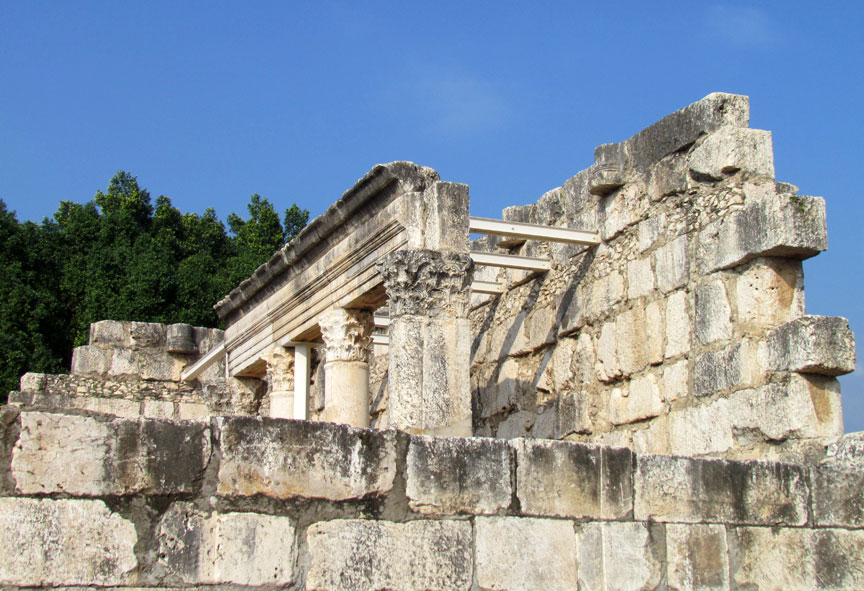
This suggestion has been critiqued by several scholars, however. In particular,
where excavators had claimed to find graffiti including the name of Peter,
others have found very little legible writing (Strange and Shanks, 1982). Others
have questioned whether the space is actually a room; the paved floor, the large
space without supports, and the presence of a cooking space have prompted some
to note that these are more consistent with yet another courtyard (Freyne,
2001).
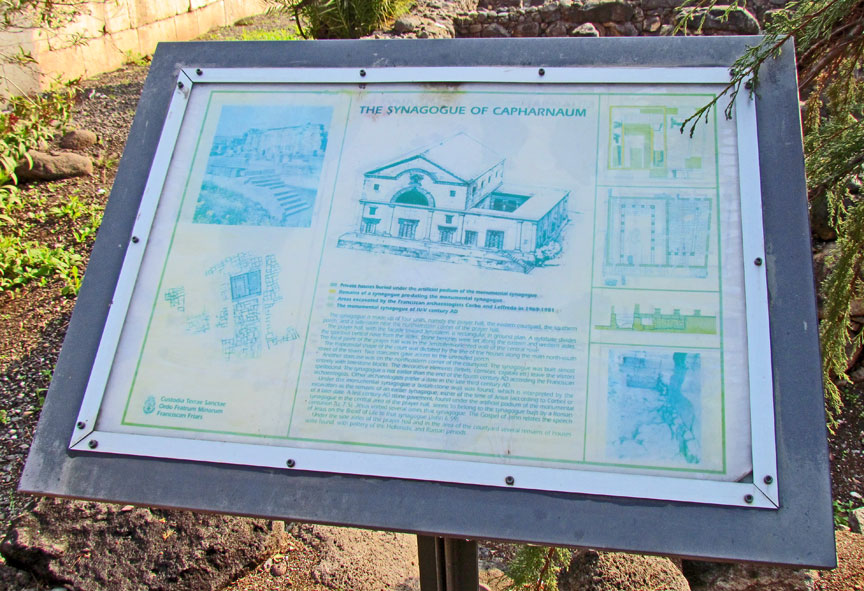
In this period, the sacra insula acquired a new appearance. First, a
thick-walled, slightly trapezoidal enclosure was built surrounding the entire
insula; its sides were 27–30 meters long. Made of plaster, they reached a height
of 2.3 meters on the north side. It had two doors, one in the southwest corner
and the other in the northeast corner.

Next, although there is evidence that the private houses remained in use after
the transformation, the one particular room that had before been treated
differently was profoundly altered and expanded. A central archway was added to
support a roof and the north wall was strengthened with mortar. New pavement was
installed, and the walls and floor were plastered. (Loffreda, 1974)

olive press
This structure remained until the middle of the 5th century when the sacra insula was dismantled and replaced with a larger basilica.

The 5th-century church consists of a central octagon with eight pillars, an
exterior octagon with thresholds still in situ, and a gallery or portico that
leads both into the interior of the church as well as into a complex of
associated buildings to the East, a linkage achieved via a short passageway.
Later, this passage was blocked and an apse with a pool for baptism was
constructed in the middle of the east wall. From this wall ascended two stairs
on either side of the baptistry, and the excess water from the rite would have
escaped along this path.

There is a close relationship between the octagonal church and the house of
Saint Peter. The Byzantines, upon constructing the new church, placed the
central octagon directly on top of the walls of the house with the aim of
preserving its exact location. Although Byzantine worshippers stood on the very
site where Jesus was believed to have stood, virtually none of the original
house was visible any longer, as the walls had been torn down and the floor
covered in mosaics.

In the portico, the pattern of the mosaic was purely geometric, with four rows
of contiguous circles and small crosses. In the zone of the external octagon,
the mosaics represented plants and animals in a style similar to that found in
the Basilica of the Feeding of the Five Thousand, in Taghba. In the central
octagon, the mosaic was composed of a strip of calcified flowers, of a field of
schools of fish with small flowers, and of a great circle with a peacock in the
center.

The ruins of this building, among the Oldest synagogues in the world were
identified by Charles William Wilson. The large, ornately carved, white building
stones of the synagogue stood out prominently among the smaller, plain blocks of
local black basalt used for the towns other buildings, almost all residential.
The synagogue was built almost entirely of white blocks of calcareous stone
brought from distant quarries.
The building consists of four parts: the praying hall, the western patio, a
southern balustrade and a small room at the northwest of the building. The
praying hall measured 24.40 ms by 18.65 m, with the southern face looking toward
Jerusalem.

The internal walls were covered with painted plaster and superbly well-done
stucco work found during the excavations. Watzinger, like Orfali, believed that
there had been an upper floor reserved for women, with access by means of an
external staircase located in the small room. But this opinion was not
substantiated by the later excavations of the site.
The synagogue appears to have been built around the fourth or 5th century AD.
Beneath the foundation of this synagogue lies another foundation made of basalt,
and Loffreda suggests that this is the foundation of a synagogue from the 1st
century AD, perhaps the one mentioned in the Gospels (Loffreda, 1974). This,
too, has been open for debate. Later excavation work was attempted underneath
the synagogue floor, but while Loffreda claimed to have found a paved surface,
others are of the opinion that this was an open, paved market area.

The ancient synagogue still has two inscriptions, one in Greek and the other in
Aramaic, that remember the benefactors that helped in the construction of the
building. There are also carvings of five- and six-pointed stars and of palm
trees.

In 1926, the Franciscan Orfali began the restoration of the synagogue. After his
death, this work was continued by Virgilio Corbo beginning in 1976.

Sea of Galilee
In 1986 the water of the lake reached an unusually low point. At that time, an ancient fishing boat was discovered that has been claimed to date from the 1st century AD. The vessel was 8 meters long and was preserved in the mud of the lake. After a difficult unearthing process that had to be completed before the water rose again, the excavated boat was put on display in its modern-day position near the kibbutz Ginosar as The Sea of Galilee Boat.
Text from Wikipedia